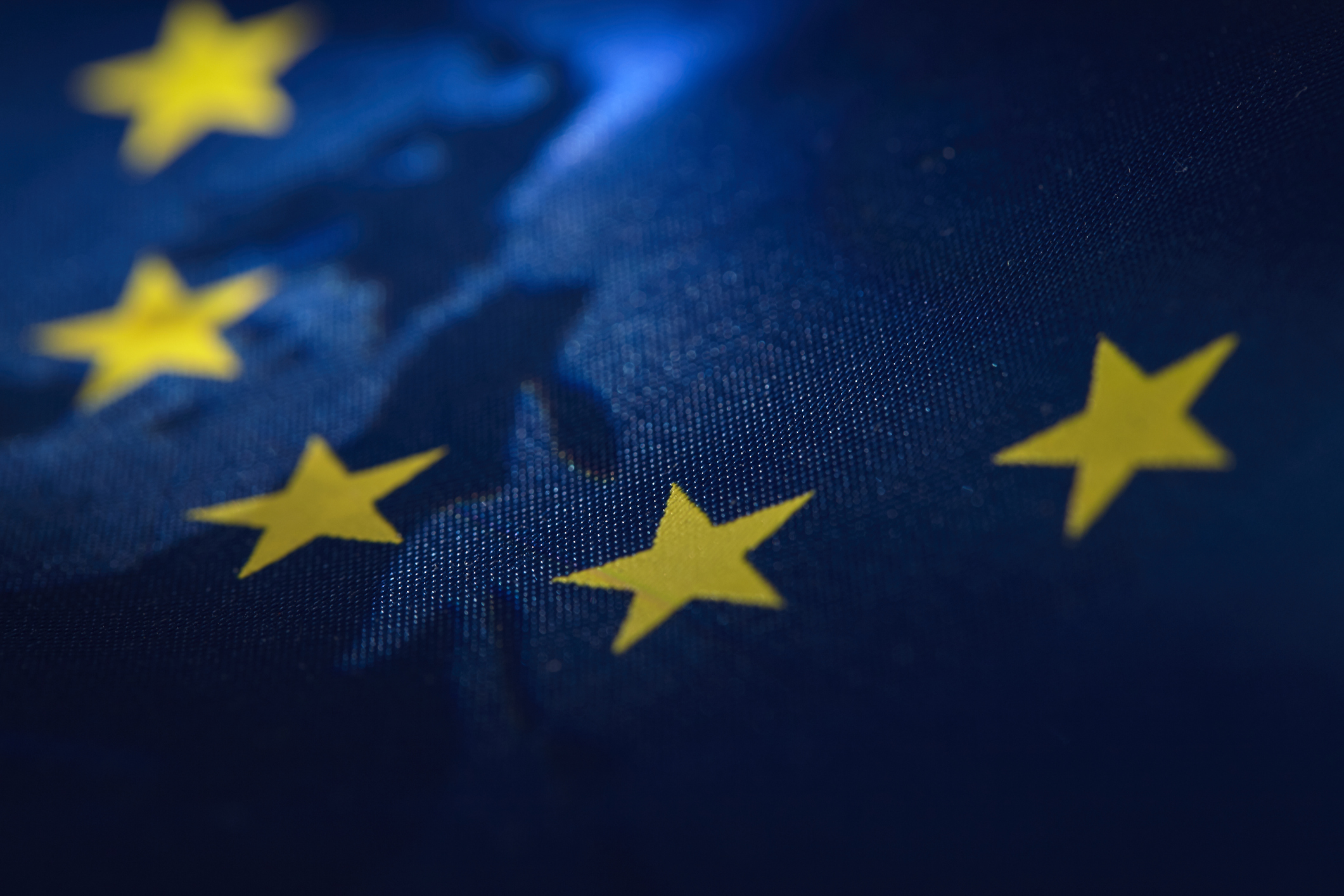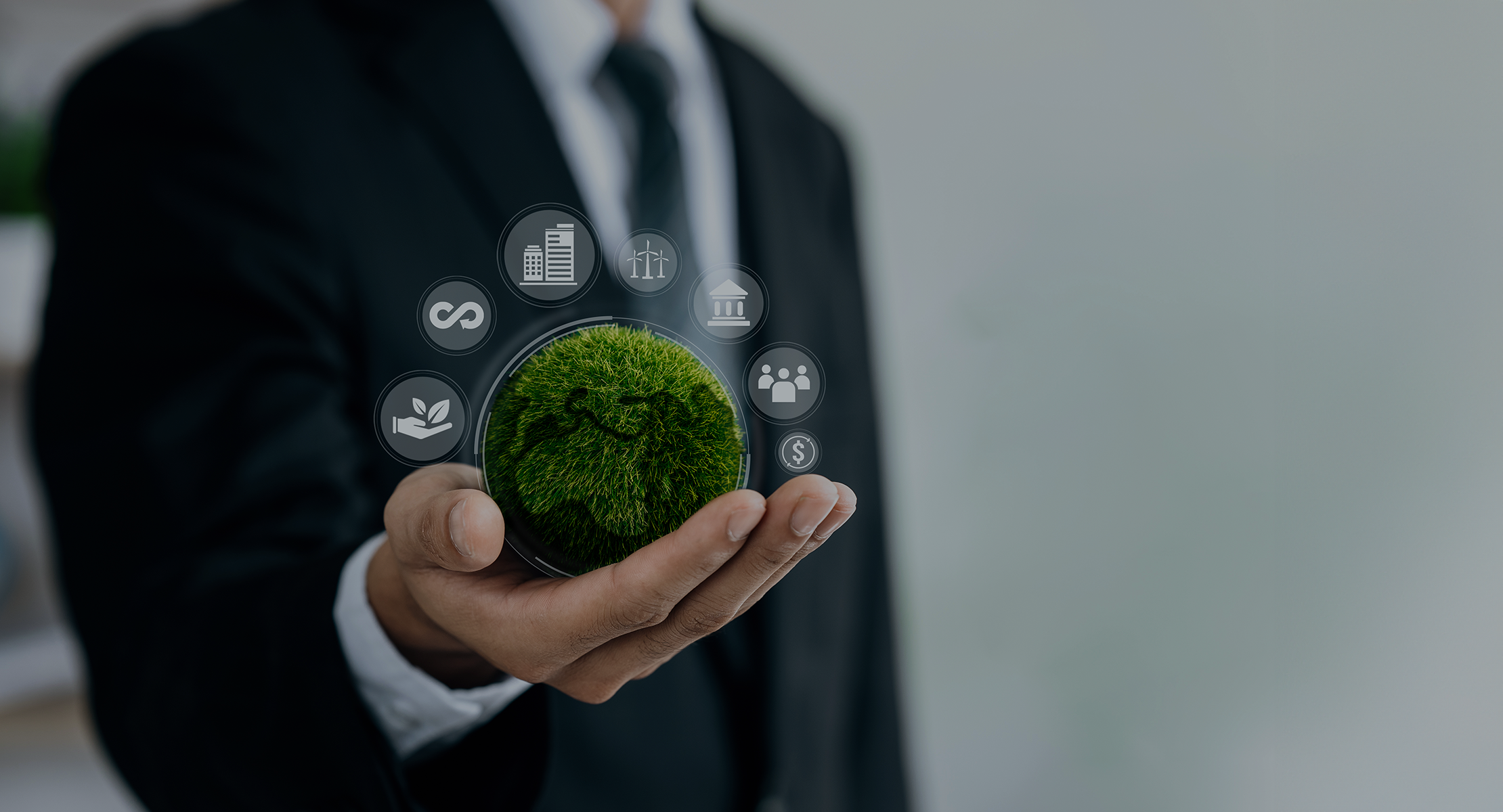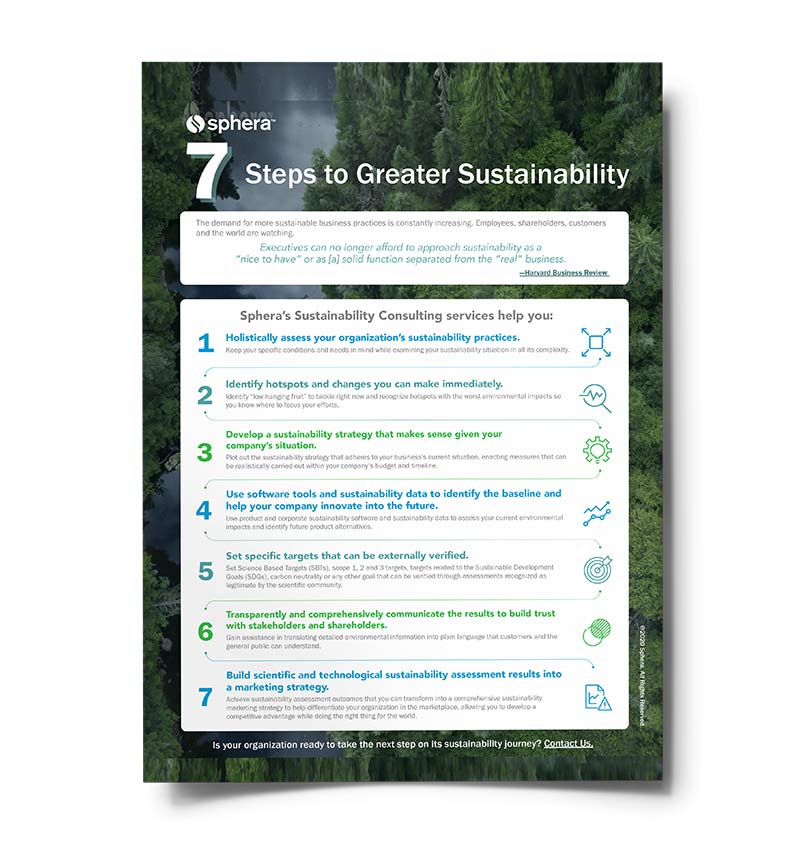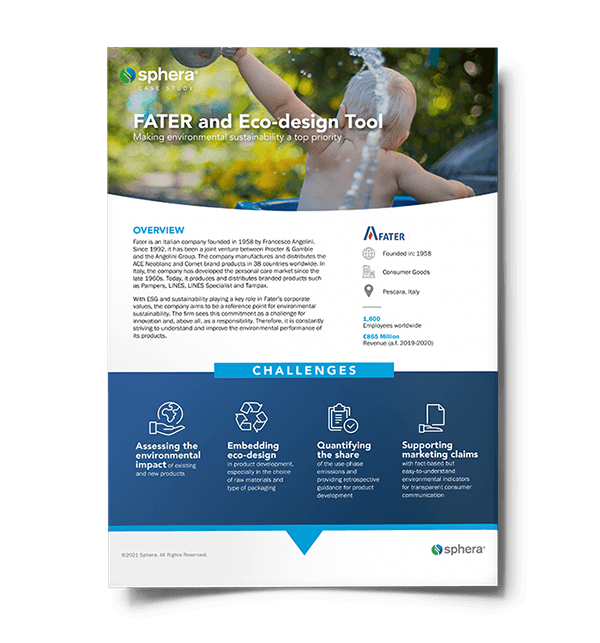In a world faced with resource depletion and environmental degradation, the concept of a circular economy has gained significant traction. Unlike the traditional linear model of “Take – Make – Throw Away,” the circular economy offers a more sustainable and regenerative approach. European governments in particular are advancing this model. The European Union is striving to double its circular material use rate in the coming decade.
The circular economy aims to decouple economic growth from the exploitation of natural resources. It promotes the efficient use, reuse and recycling of materials within a closed-loop system. With its potential to revolutionize industries and mitigate environmental impacts, this approach is more relevant than ever.
Defining the Circular Economy
The circular economy can be defined as an economic system that maximizes the value of products, materials and resources while minimizing waste and environmental harm. In the quest for a sustainable future, the concept of circular economy goes beyond minimizing harm to the environment. As the Ellen MacArthur Foundation puts it, the focus should shift toward actively improving conditions on the planet.
The butterfly diagram is a representation of the circular economy and highlights two crucial cycles. In the technical cycle, products and materials circulate through processes such as reuse and recycling. In the biological cycle, biodegradable materials return nutrients to the earth, promoting natural regeneration.
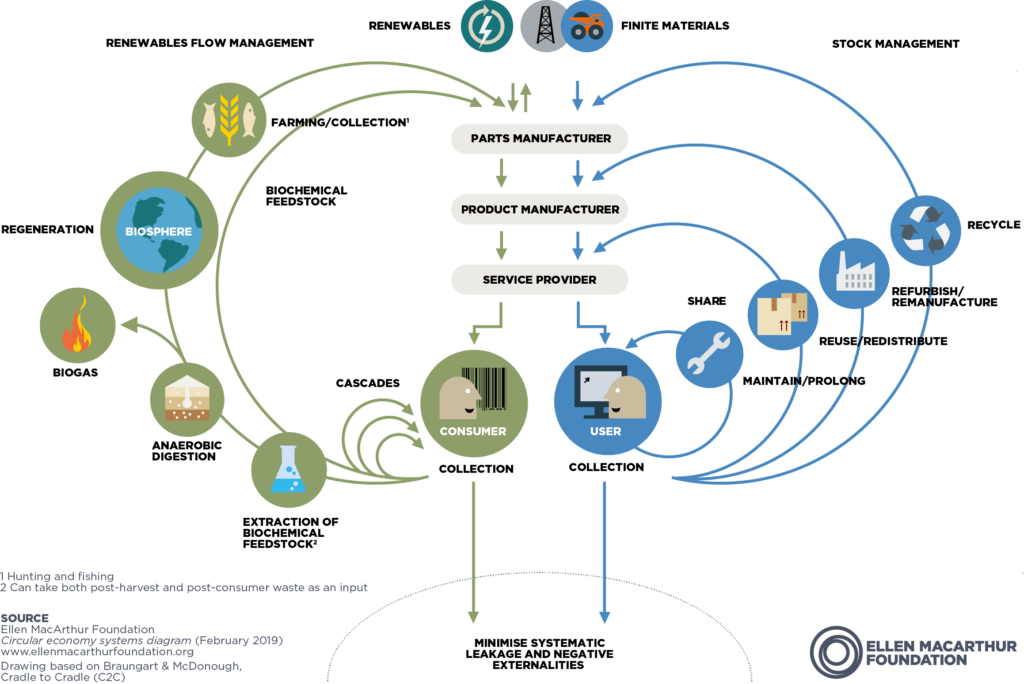
Source: Ellen MacArthur Foundation – Circular economy systems diagram (February 2019) – www.ellenmacarthurfoundation.org – Drawing based on Braungart & McDonough, Cradle to Cradle (C2C).
Three principles that are defined by the Ellen MacArthur Foundation support these two cycles. The principles are:
- Eliminating waste and pollution.
- Circulating products and materials at their highest value.
- Regenerating nature.
The circular economy presents a viable solution to address the pressing challenges of resource scarcity, pollution and climate change. With its emphasis on this model, the EU plans to lead the way to a circular economy at the global level.
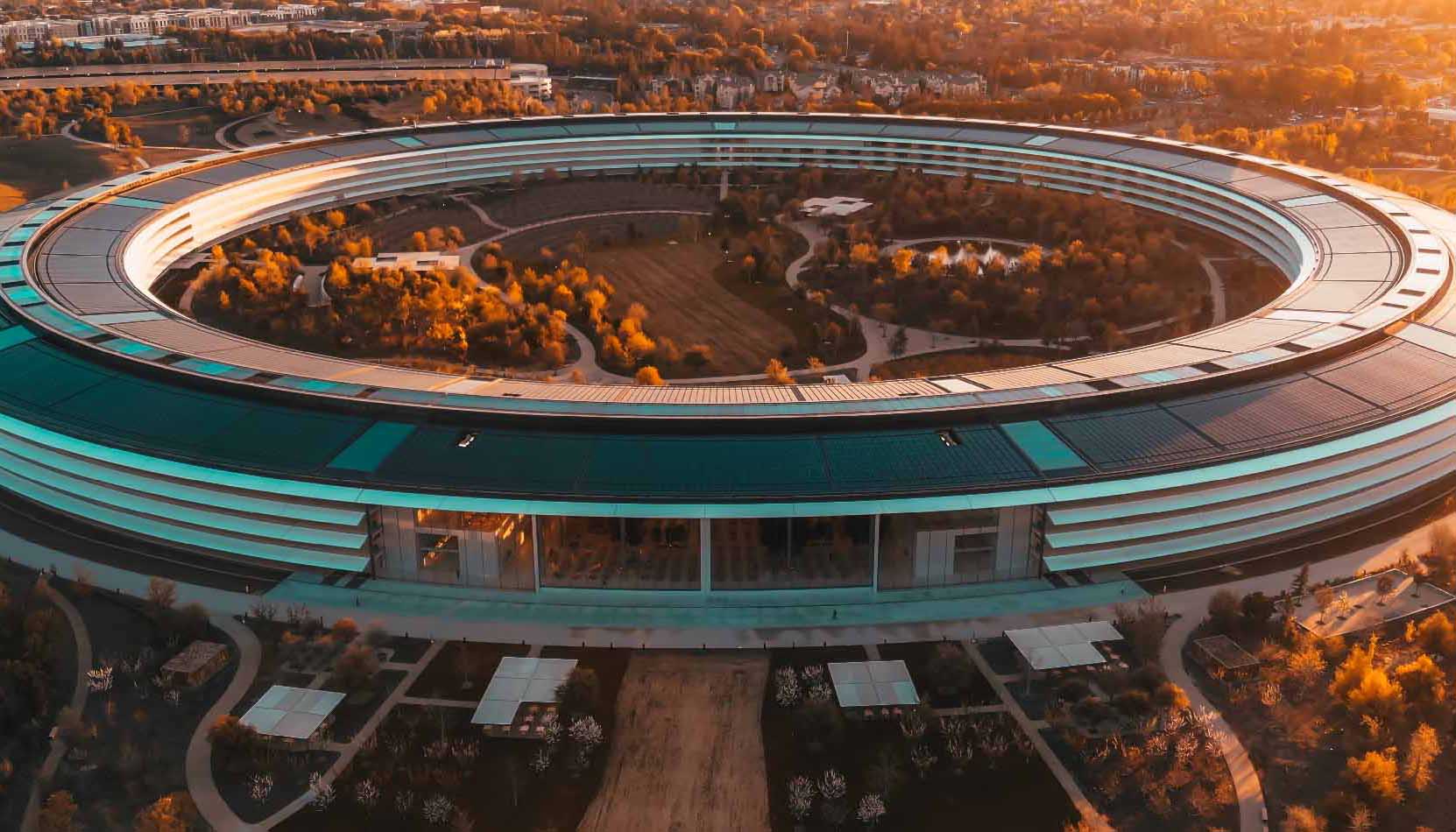
Introducing the Three Benefits of a Circular Economy
Embracing a circular economy model offers ecological, regulatory and business advantages. In this approach, companies prioritize resource efficiency, waste reduction and sustainable practices. This generates three benefits: The circular economy brings about positive ecological impacts, aligns with regulatory requirements and unlocks business opportunities. These all contribute to a more sustainable and prosperous future for European and global citizens.
1. Ecological Relevance and Carbon Reduction Potential
The circular economy and its ecological relevance, as well as its carbon reduction potential, are closely tied to the three principles set forth by the Ellen MacArthur Foundation. First, when companies can implement effective waste management strategies, they eliminate waste and pollution. They can embrace circular design principles, such as the 9 R’s (Refuse, Rethink, Reduce, Reuse, Repair, Refurbish, Remanufacture, Repurpose, Recycle and Recover). In this way, they can circulate products and materials at their highest value.
Such strategies, in turn, reduce the need for virgin materials and address the financial and environmental impacts associated with stock depletion. This enables businesses to also regenerate nature and mitigate climate-related risks. Implementing circular economy principles allows companies to unlock their full potential to contribute to carbon reduction and other environmental goals.
However, it is important to recognize that circularity does not automatically guarantee a lower environmental footprint or overall environmental superiority. While the circular economy offers tremendous potential, it requires careful consideration of specific contexts, processes and impacts. Companies must ensure that circular practices truly align with their sustainability goals.
2. Navigating the EU Regulatory Roadmap
Europe’s journey toward a more circular economy is also guided by regulatory frameworks and initiatives. The regulatory roadmap has seen significant milestones over the years.

Source: Sphera – Strategic Advisory Services (2023)
The concept of Extended Producer Responsibility (EPR) was introduced to the Swedish Ministry of Environment in 1990 by Thomas Lindhqvist and Karl Lidgren. In Germany, the Closed-Loop Economy and Waste Law (Kreislaufwirtschafts- und Abfallgesetz – KrW-/AbfG, 1994) further advanced the circular economy agenda.
Further circular economy models gained momentum around 2015 with the help of advocates like the Ellen MacArthur Foundation. Motivated industries, for example, the fashion industry, started to set up specific circularity programs. Among other circularity aspects, these focused on new business models such as rental or second-hand services. Others combined circular design with reverse logistics, aiming to reduce waste and to bring products back into the loop.
As part of the European Green Deal, two significant pieces of legislation were launched in 2020, providing a clear framework for businesses to follow. The Circular Economy Action Plan (CEAP) emphasizes key concepts such as waste hierarchy and the 9 R’s. Further, Regulation (EU) 2020/852, also known as the EU Taxonomy, establishes a framework to facilitate sustainable investment. It aims to create a “green list” of environmentally sustainable economic activities.
Looking ahead, the European Corporate Sustainability Reporting Directive (CSRD) will be translated into national laws and take force in 2025 (reporting on 2024 data). The CSRD requires companies to report on resource use and circular economy under the European Sustainability Reporting Standard (ESRS) E5. This will solidify the regulatory framework in the years to come.
3. Business Opportunities
The EU’s stated aims include protecting natural resources while boosting sustainable growth, paving the way for a cleaner and more competitive Europe. The circular economy holds significant business relevance by aligning ecological goals with economic interests. Through circular practices, companies can generate additional value. They optimize material use, reduce procurement risks and improve resource efficiency.
Unlike the linear economy, which pits ecology against the economy, the circular economy demonstrates that environmental sustainability and economic prosperity can go hand in hand. It presents businesses with opportunities for innovation, cost savings and improved brand reputation. At the same time, businesses help drive the creation of a more resource-efficient and thriving global economy.

A Holistic Approach for a Better Future
To mitigate negative impacts on global ecosystems, the European Union is accelerating its transition to a circular economy. This concept goes beyond minimizing environmental harm. It shifts the focus toward actively improving the environment. Companies that adopt circular practices experience ecological, regulatory and business benefits. They can contribute to a more resource-efficient, environmentally conscious and economically prosperous world.
Taking a holistic approach that considers both the technical and biological cycles is essential as societies strive to actively improve the environment and create a regenerative future for generations to come.

